When my friend handed me a strange, coconut-like fruit and said “Welcome to authentic India,” I had no idea what awaited me. The wood apple, with its rugged, weathered shell, looked intriguing. But nothing could prepare me for the moment we cracked it open. The aroma hit me first – an intense, fermented scent that somehow managed to be both offensive and fascinating. This was my introduction to one of India’s most polarizing fruits, a taste experience I’ll never forget.

What Exactly Is a Wood Apple?
The wood apple (Limonia acidissima), known locally as bel or bael, grows abundantly across the Indian plains. This hardy fruit thrives in monsoon climates and comes into season during the drier winter months, when markets across India display piles of these mysterious brown orbs. Its rock-hard shell, resembling a weathered coconut, serves as nature’s perfect packaging, protecting the soft, pulpy interior.
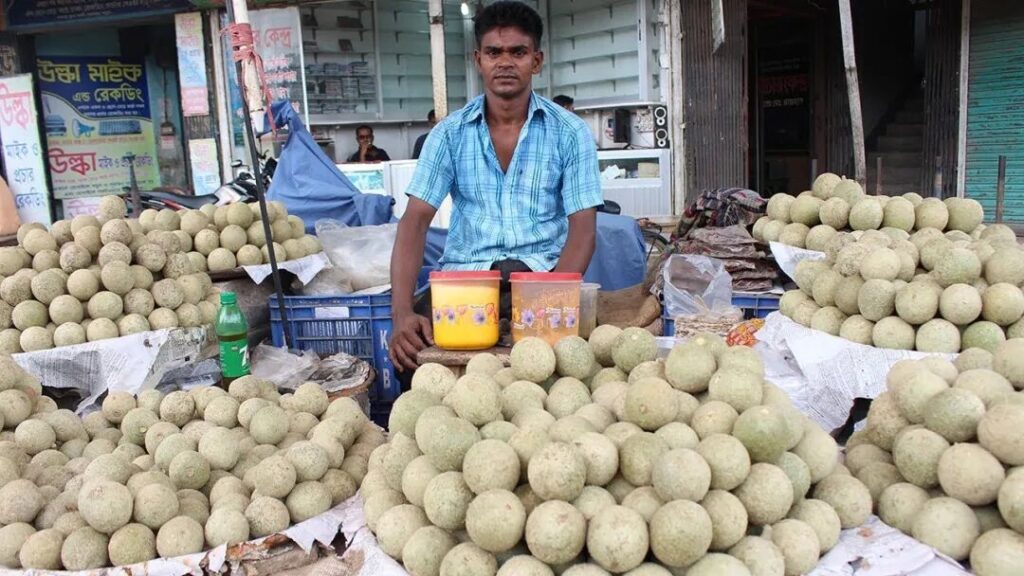
The Great Wood Apple Taste Test
Confronting the Aroma and Texture
Let’s be honest – the wood apple doesn’t make a good first impression. The scent is… challenging. Some describe it as fermented grapes mixed with aged cheese, others detect notes of overripe fruit with a distinct earthy undertone. The texture is equally surprising – a thick, sticky pulp filled with fibrous strands, ranging in color from pale ivory to deep brown depending on ripeness.

A word to the wise: Your first wood apple experience should probably happen outdoors. The aroma tends to linger, and let’s just say it’s not for everyone.
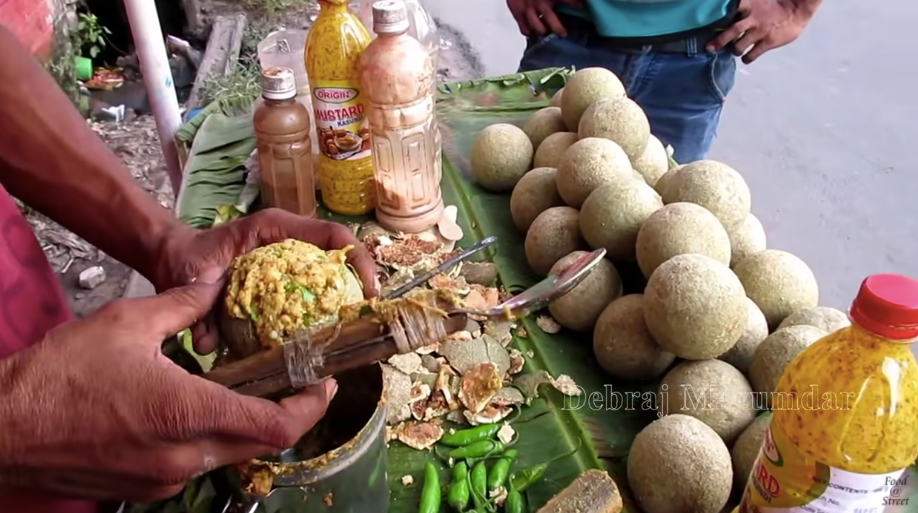
The Flavor Journey: From Shock to Appreciation
Taking that first bite requires courage, but the reward is a flavor journey unlike any other. The initial taste is sharply tangy, followed by noticeable astringency that makes your mouth pucker. Then, as you keep chewing, hidden sweetness emerges, creating a complex fermented flavor profile that some compare to a cross between blue cheese and tamarind. It’s an acquired taste that many Indians absolutely cherish.
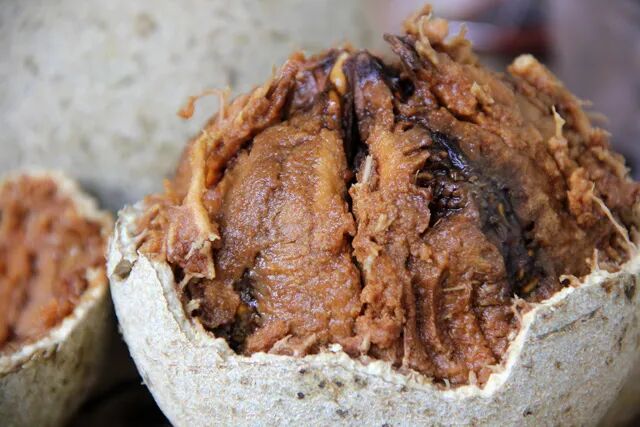
From Street Food to Sacred Offering
How Indians Enjoy Wood Apples
Across India, you’ll find wood apple prepared in countless ways. In rural areas, people often eat it straight from the shell, scooping out the pulp with their fingers. But in cities, street vendors transform it into something truly special:
- Spiced Treat: Mixed with chili powder, cumin, and a touch of sugar
- Refreshing Drink: Blended with water and jaggery to make bel sherbet
- Tangy Chutney: Combined with spices to create a bold condiment

The Sacred Connection
The wood apple holds deep religious significance as the favorite fruit of Lord Ganesha, the elephant-headed god of wisdom. During festivals, you’ll see these fruits prominently displayed in temples and household shrines. There’s even an interesting natural phenomenon – elephants eat the whole fruit and digest only the pulp, leaving the hard shells intact, which has become a metaphor for something that appears substantial but lacks real value inside.
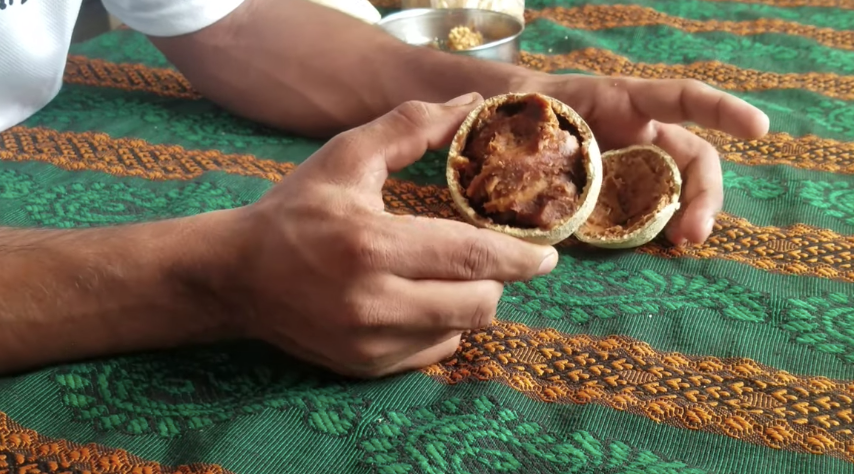
Incredible Health Benefits of Wood Apple
Nutritional Powerhouse
If the taste doesn’t convince you, the health benefits might. The wood apple is packed with:
- Vitamins (particularly vitamin C and B vitamins)
- Essential minerals like calcium, phosphorus, and iron
- High fiber content for digestive health
- Natural antioxidants
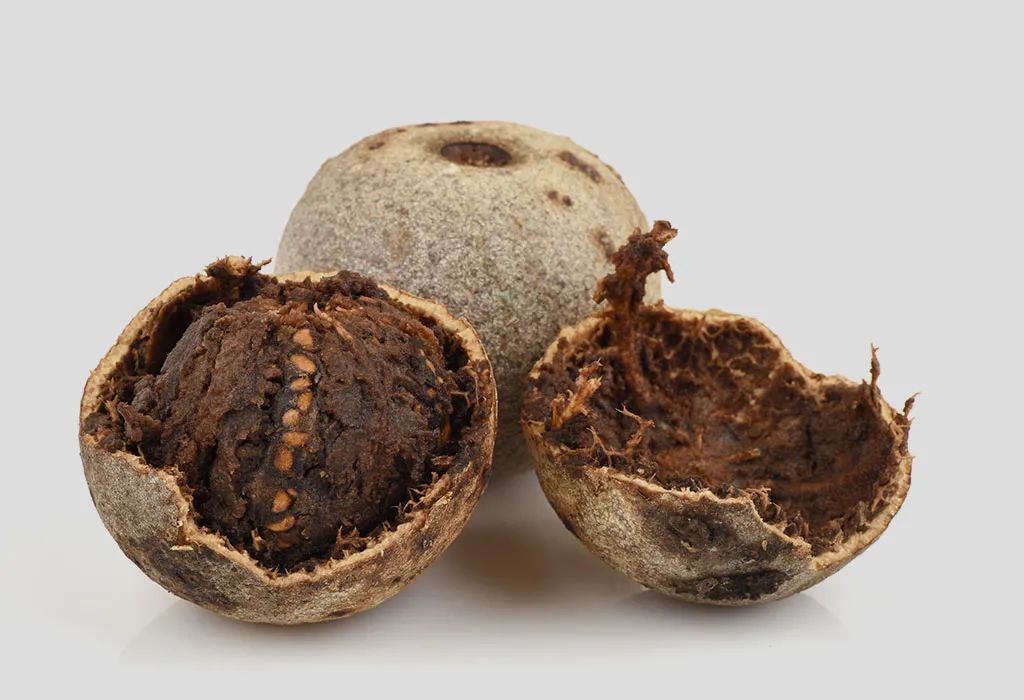
Traditional medicine has used virtually every part of the wood apple tree for centuries. The leaves treat digestive issues, the bark addresses skin conditions, and the fruit itself is considered beneficial for everything from liver health to respiratory problems.
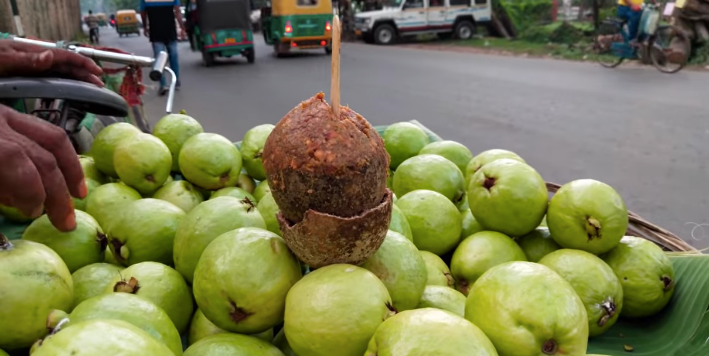
A Fruit With Philosophical Roots
There’s something poetic about how this humble fruit has woven itself into Indian culture. While Western mythology features the apple as a fruit of temptation and knowledge, Indian tradition sees the wood apple as something more practical and grounded. Some ancient texts even describe the universe originating from a cosmic egg resembling its seed.

Should You Try Wood Apple?
Approaching your first wood apple requires an adventurous spirit and reasonable expectations. Start with a small amount, preferably prepared by someone familiar with this unique fruit. The initial shock might be overwhelming, but many people find themselves growing to appreciate its complex character.
This fascinating fruit reminds us that nature doesn’t always create things to be immediately pleasant – sometimes the most rewarding experiences require us to look beyond first impressions. The wood apple may not win any popularity contests globally, but it continues to hold a special place in the hearts (and stomachs) of those who’ve learned to love its peculiar charms.


















